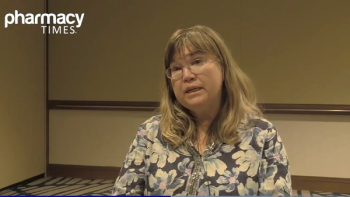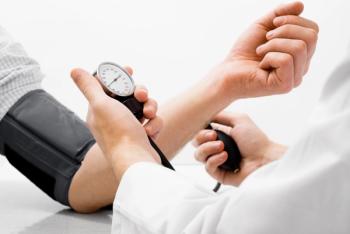
- November 2021 Technician Supplement
- Volume 3
Diabetes Management Expertise Is in Demand
Opportunities are continuously expanding in screening and medication therapy management services.
The Public Readiness and Emergency Preparedness (PREP) Act has expanded opportunities for pharmacy technicians to administer COVID-19 vaccines and therapies and routine immunizations.1
This has also paved the way for technicians to play an integral role in diabetes management and it serves as an opportunity to enhance workflow. Technicians can get involved in supporting the National Diabetes Prevention Program (National DPP) to prevent type 2 diabetes by administering testing, performing screening assessments, raising awareness of prediabetes, and recommending patient referral.2 Technician roles in diabetes management are expand- ing, and motivational interviewing is an important component (see Figure).3-7
Motivational Interviewing
Technicians can administer the American Diabetes Association prediabetes risk assessment screening as part of the National DPP, which includes questions about family history of diabetes, height/weight information, and physical activity.2,3
Technicians can also administer blood glucose testing for patients with a high score on the prediabetes screening.3 Technicians can assist individuals with diabetes on developing a care plan, identifying patients for medication therapy management (MTM) consults, and selecting a blood glucose meter.4 Pharmacists have reported barriers to implementing MTM services in the community pharmacy setting.4
One study evaluated a technician-driven MTM program in the community pharmacy setting through standardized training and interviews to assess implementation of the services.4 Pharmacists and technicians reported that the program expanded pharmacy technicians’ roles, improved confidence in providing these services, and provided streamlined MTM workflow.4
Technicians can collaborate as part of an interdisciplinary team to improve medication adherence in patients with diabetes. The Community Medication Education, Data, & Safety Program (C-MEDS) identified community-dwelling older adults with potential medication-related problems in Southern California and used an interdisciplinary health care team that included a technician, nurses, and pharmacists to provide medication safety education and perform assessments and interventions in patients’ homes at no cost.5
Eligible patients must be adults 55 years and older experiencing medication adherence problems or adult caregivers of an individual older than aged 55 years who needs assistance managing medications.5 Additionally, C-MEDS increased medication adherence among participants to certain hypertension drugs, diabetes-related medications, and statins (P < .001).5 Patients enrolled in C-MEDS also were successful at managing their medications (P < .001).5
This further highlights the integral role technicians play as part of the health care team. Evidence also shows that trained technicians can reduce dangerous drug discrepancies at transitions of care by collecting medication histories.6 Technicians can play a critical role in the hospital setting to ensure that home treatments are accurately documented to prevent duplication of therapy and medication errors at discharge for patients with diabetes.6
Technicians are usually patients’ first point of contact at community pharmacies and can help improve medication adherence through motivational interviewing as an effective form of communication. Motivational interviewing typically includes acceptance, collaboration, compassion, and evocation.7 Acceptance would involve acknowledging improvement for a patient who was forgetting to take metformin medication frequently but missed only 2 doses last week.7
The technician can ask open-ended questions in a nonjudgmental manner about patients’ diabetes medications and home blood glucose monitoring to determine their needs as part of the collaboration component.7 Technicians can document this information and have a discussion with the patient regarding how to improve adherence even further (eg, a pillbox or timer).
Active listening and contributing to the patient’s conversation are part of the compassion component, and evocation involves assisting individuals with changing their behavior to improve adherence, such as teaching them how to set the phone timer.7
After completing the motivational interview, technicians can convey the information to the pharmacist for targeted diabetes management and patient education.
Training Opportunities
There are a variety of opportunities for technicians to enhance their MTM skills in diabetes management and incorporate these programs into their community practice settings. Technicians can play an important role in identifying eligible patients, documentation, and billing for MTM services.8
In September, OutcomesMTM had a competition among technicians to emphasize their important role in MTM services.8 The OutcomesMTM platform includes free training for technicians that contains MTM claim documentation, MTM services included in OutcomesMTM program, quality assurance measures, and strategies to navigate the platform.8
PowerPak has developed the Diabetes MTM Certificate Program for technicians that recognizes the vital role they play as part of the health care team.9 This paid certificate program includes access to 9 continuing education courses on diabetes management with decision making strategies on when to consult a pharmacist.9
The program consists of a diabetes overview and pathophysiology, blood glucose monitoring, insulin medication safety practices and therapy management, MTM comprehensive medication reviews and services, noninsulin injectable glucose-lowering medications, nutrition recommendations, oral agent treatment options, and physical activity recommendations.9
Jennifer Gershman, PharmD, CPh, PACS is a drug information pharmacist and Pharmacy Times® contributor who resides in South Florida.
References
1. Expanding access to COVID-19 therapeutics. US Department of Health & Human Services. Updated September 21, 2021. Accessed October 7, 2021. https://www. phe.gov/Preparedness/legal/prepact/Pages/PREPact-NinethAmendment.aspx
2. Rx for the National Diabetes Prevention Program. CDC. 2021. Accessed October 7, 2021. https://www.cdc.gov/diabetes/prevention/pdf/pharma- cists-guide.pdf
3. Could you have prediabetes? CDC. Accessed October 7, 2021. https://www. cdc.gov/prediabetes/takethetest/
4. Burnside TPT, Scott NJ, Smith MG. Implementation of technician-driven medication therapy management program in community pharmacies. J Am Pharm Assoc. 2019;59(4S):S156-S160.e2. doi:10.1016/j.japh.2019.06.014
5. Meyer M, Enguidanos S, Zhu Y, Likar D, Batra R. Community medication education, data, & safety (C-MEDS): findings from a pilot project. J Am Geriatr Soc. 2021;69(3):813-821. doi:10.1111/jgs.16981
6. ZhangK,ChiaK,HawleyCE,UricchioMJ,DriverJA,SalowM.Ablueprintforsuccess: using an implementation framework to create a medication history technician pilot program. J Am Pharm Assoc. 2021;61(4):e301-e315. doi:10.1016/j.japh.2021.01.018.
7. Saclolo A, Desselle SP. Motivational interviewing: effective communication is important for technicians. Pharmacy Times®. July 30, 2020. Accessed October 8, 2021. https://www.pharmacytimes.com/view/motivational-inter- viewing-effective-communication-is-important-for-technicians
8. Pharmacy technicians & students. Outcomes Inc. Accessed October 8, 2021. https://outcomesmtm.com/pharmacy-technicians-students-2/
9. Pharmacy technician diabetes MTM certificate program. PowerPak. Accessed October 9, 2021. https://www.powerpak.com/phtdmtm/
Articles in this issue
almost 4 years ago
Legislative, Regulatory Changes Are Occurring Rapidlyalmost 4 years ago
Help Remove Barriers to Cost-Related Nonadherencealmost 4 years ago
Will Increase in Need for Technicians Stick?almost 4 years ago
Infographic: Pharmacy Techniciansalmost 4 years ago
Service-Centered Pharmacies Mean New RolesNewsletter
Stay informed on drug updates, treatment guidelines, and pharmacy practice trends—subscribe to Pharmacy Times for weekly clinical insights.





















































































































































































































